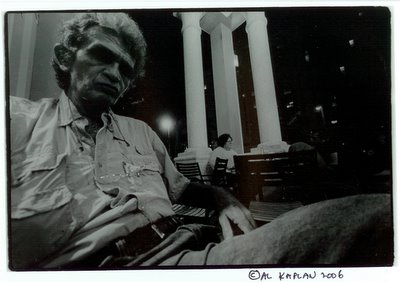Breaking old habits
loading the gray scale for print



Working for newspapers change the way you look at a print, or at least it did back in the days of making half tone negatives on sheets of Kodalith Ortho film with a process camera using a half tone screen and a vacum back. The 1960's were the waning days of letterpress printing using zinc plates for printing photos. Offset lithography was fast replacing that technology but you still needed to produce that half tone negative from the original photograph.
The screen was held in pace on the sheet of film by vacuum to assure a tight close contact and three seperate exposures were made. The camera back tilted into a horizontal position and a weak overhead light was used to expose the film to the screen only,the "flash", no picture, which assured a slight dot pattern in the darkest areas of the photo. Another exposure was made of the photo through the the screen, which was the main exposure. Lastly, a short exposure was made of the original without the screen in place, the "bump" which gave you better tonality in the brightest areas. I guess you could call it "post processing" in the analog era.
The camera operator could pretty much control the overall contrast of the finished reproduction as well as the amount of deail in both high light and shadow areas. In order to make life easy for the guy (few women worked in production in those days) you didn't want to give him a a gorgeous print with inky black shadow areas with just a hint of detail or whites without any detail at all. It was easier to work from a slightly flat image, increasing the contrast just enough to get a good reproduction by playing with the relative amout of bump and flash. This was done by experience, not a set formula. The old timers could listen to a ball game on the radio, chat with somebody, smoke a cigarette and drink coffee, all the while putting one photo after another in the vacuum back, adjusting the image size (which affected exposure too), and "just knew" how long each of those three exposures needed to be. In many cases the lights were controlled by a toggle switch, and no timer was employed.
Because I can't seem to kick the habit, I guess you could say, I have someone push out my gray photos before they are posted here. The top darker photo is the one you'd turn in to the newspaper in the old days. The process for the other two of course is all done at the computer with the necessary PhotoShop curves, calculations, and channels. Modern lingo but I suppose it's still Bump and Flash.

0 Comments:
Post a Comment
<< Home